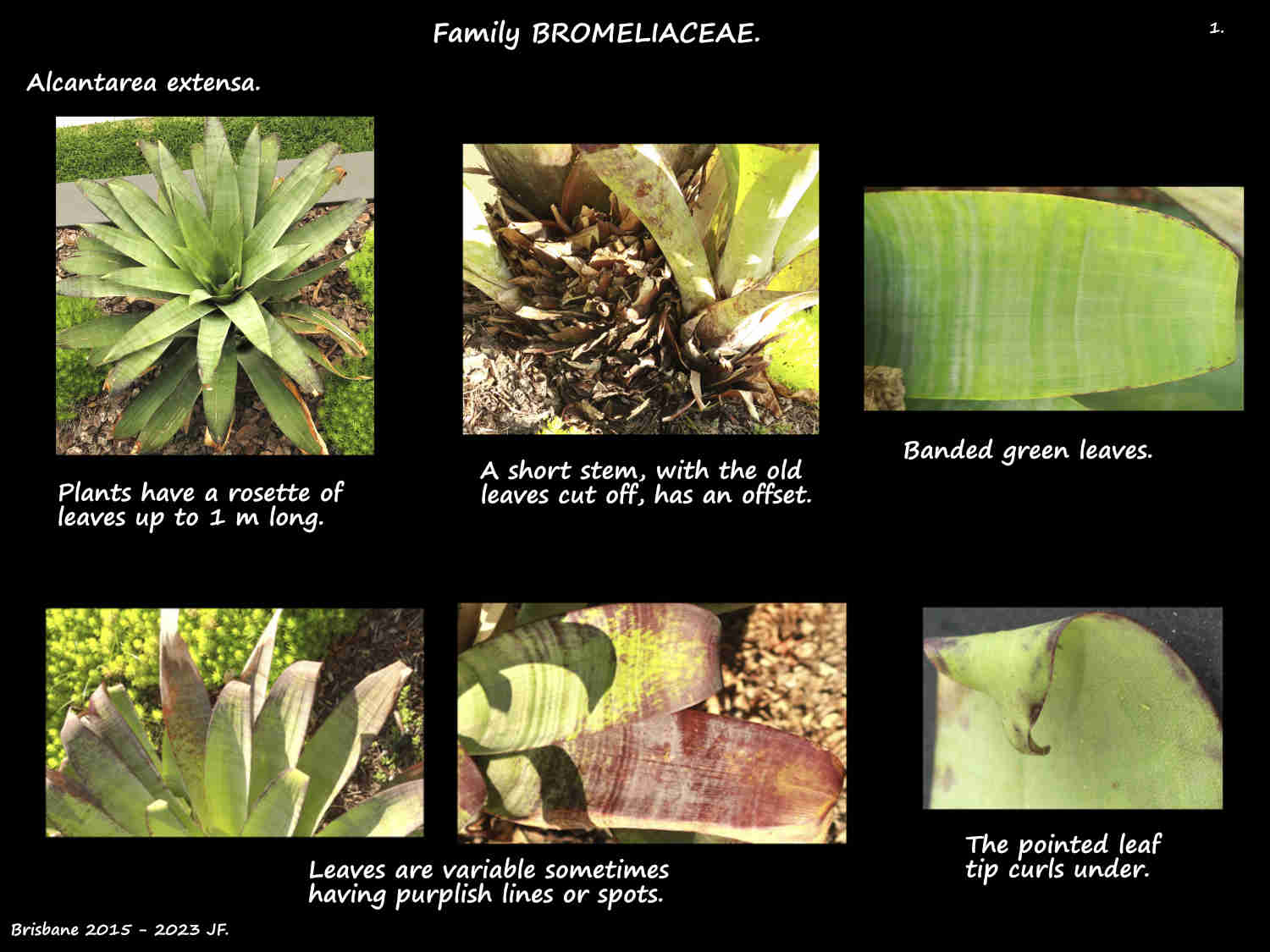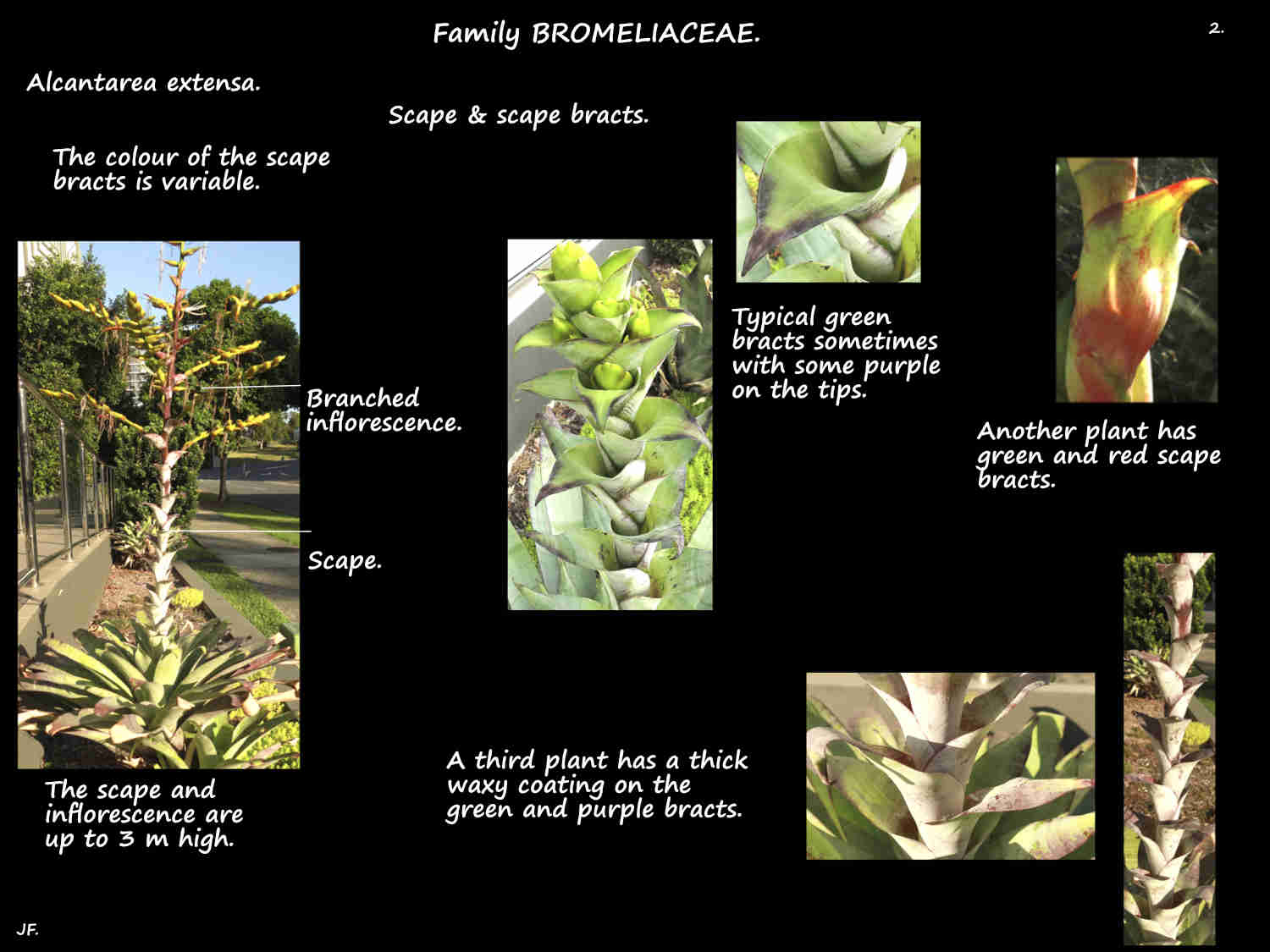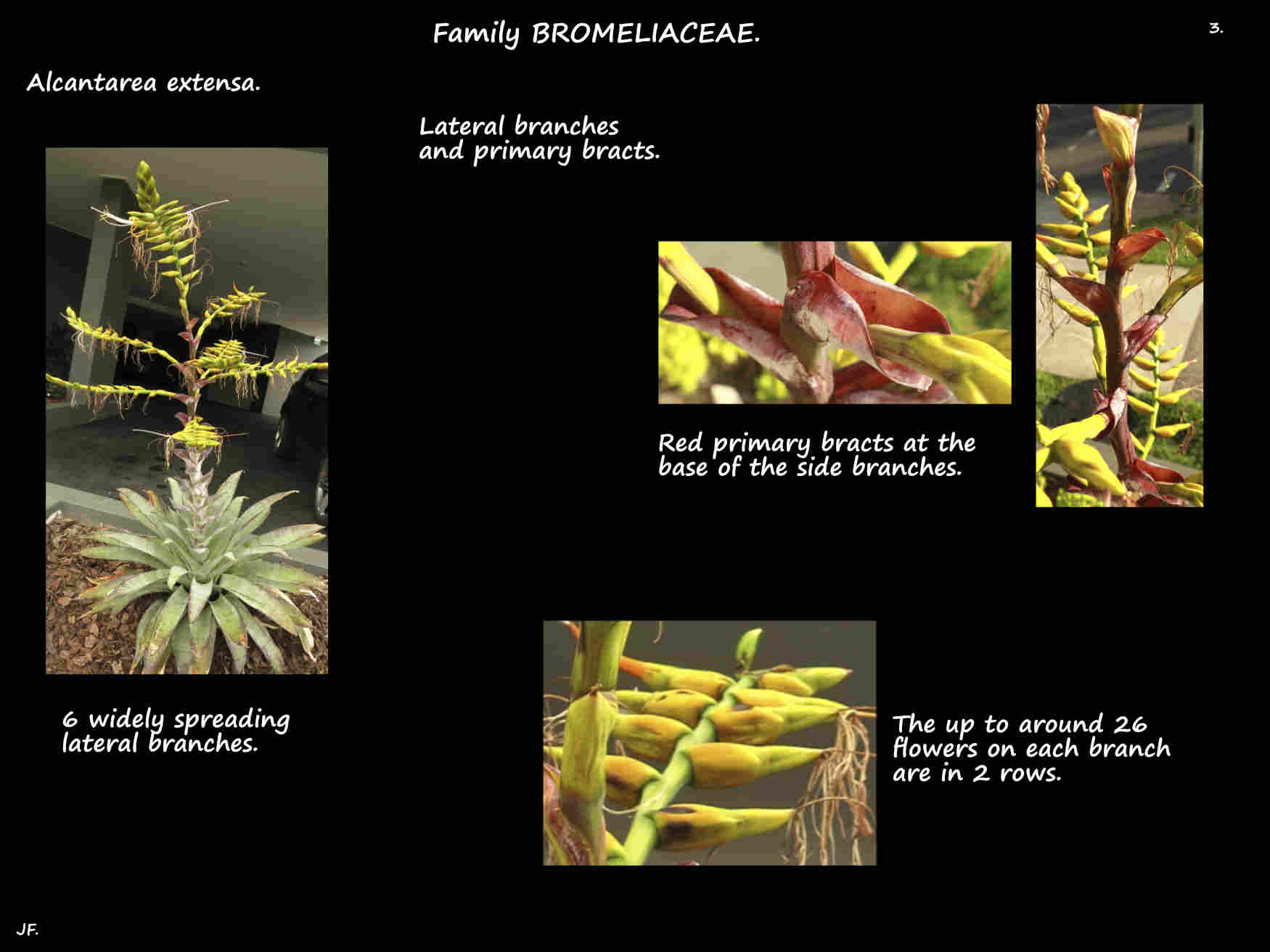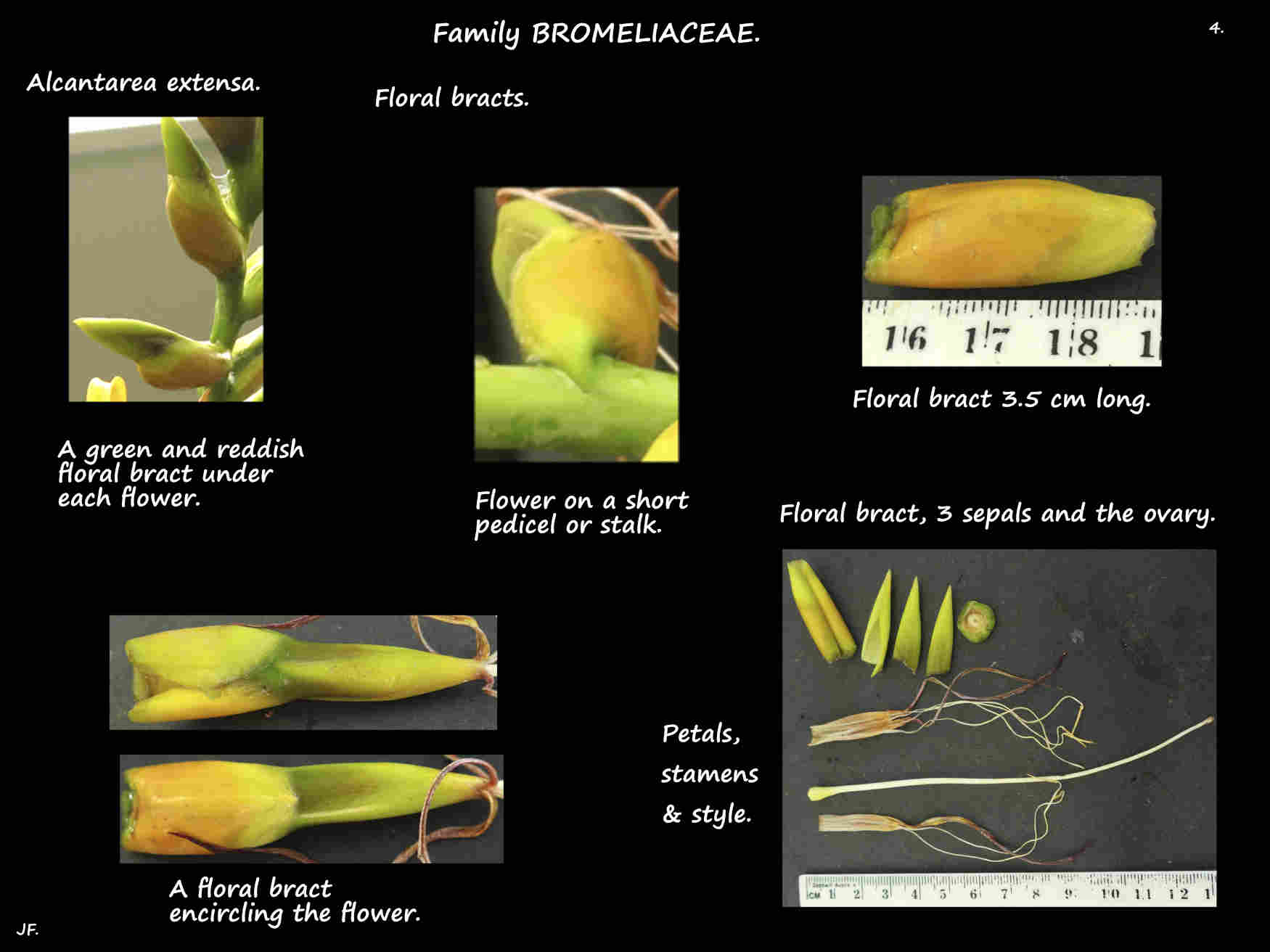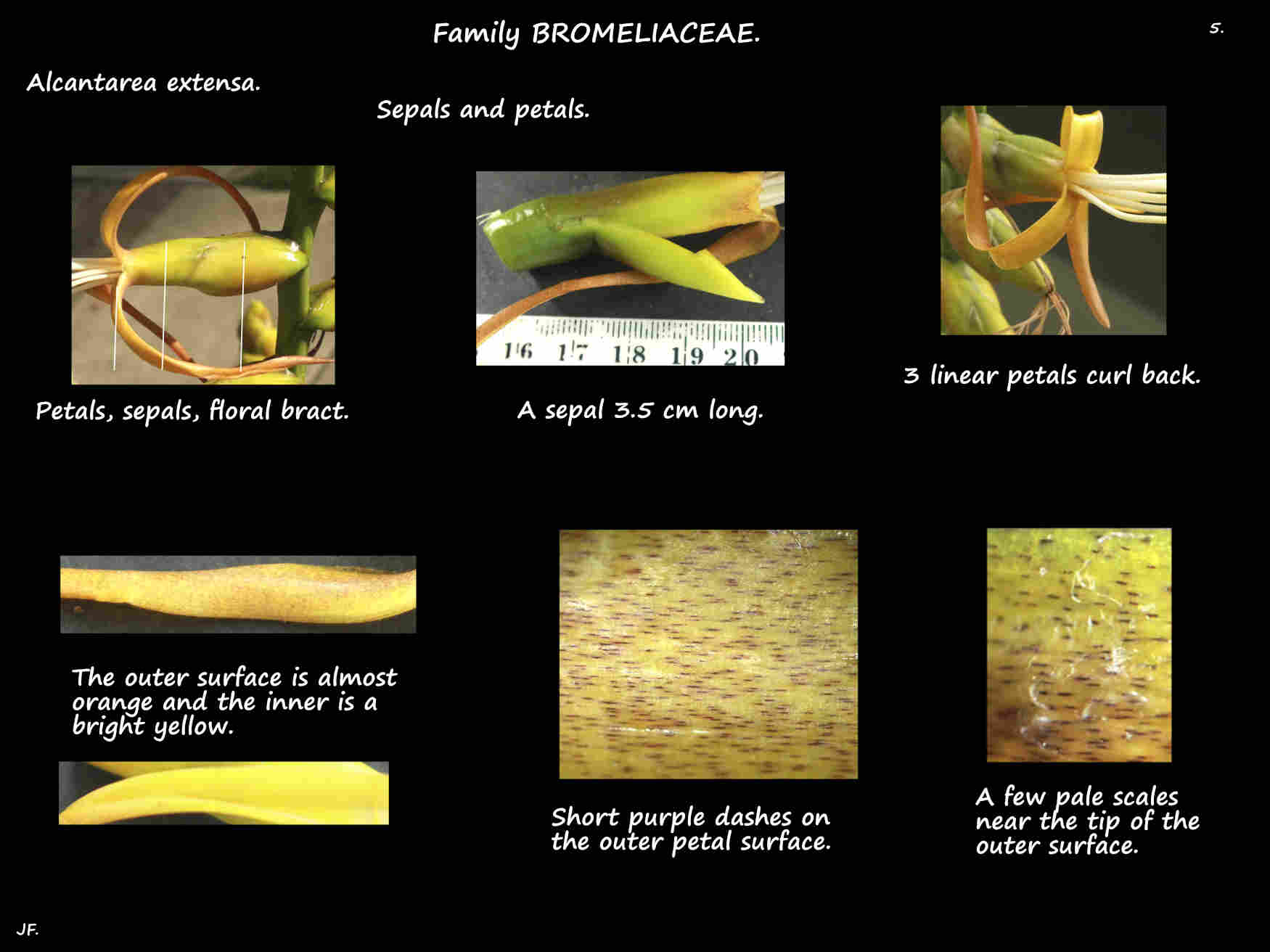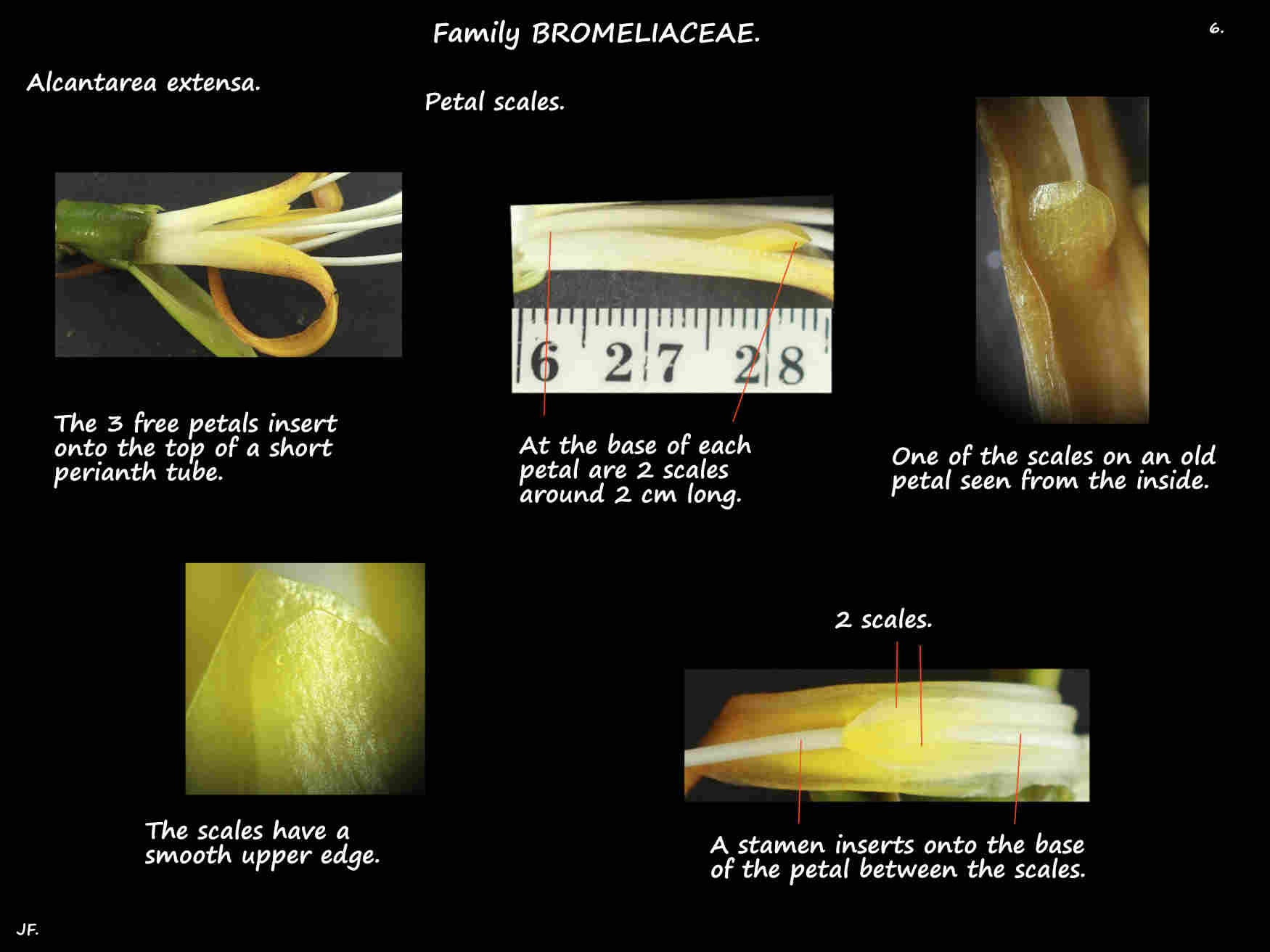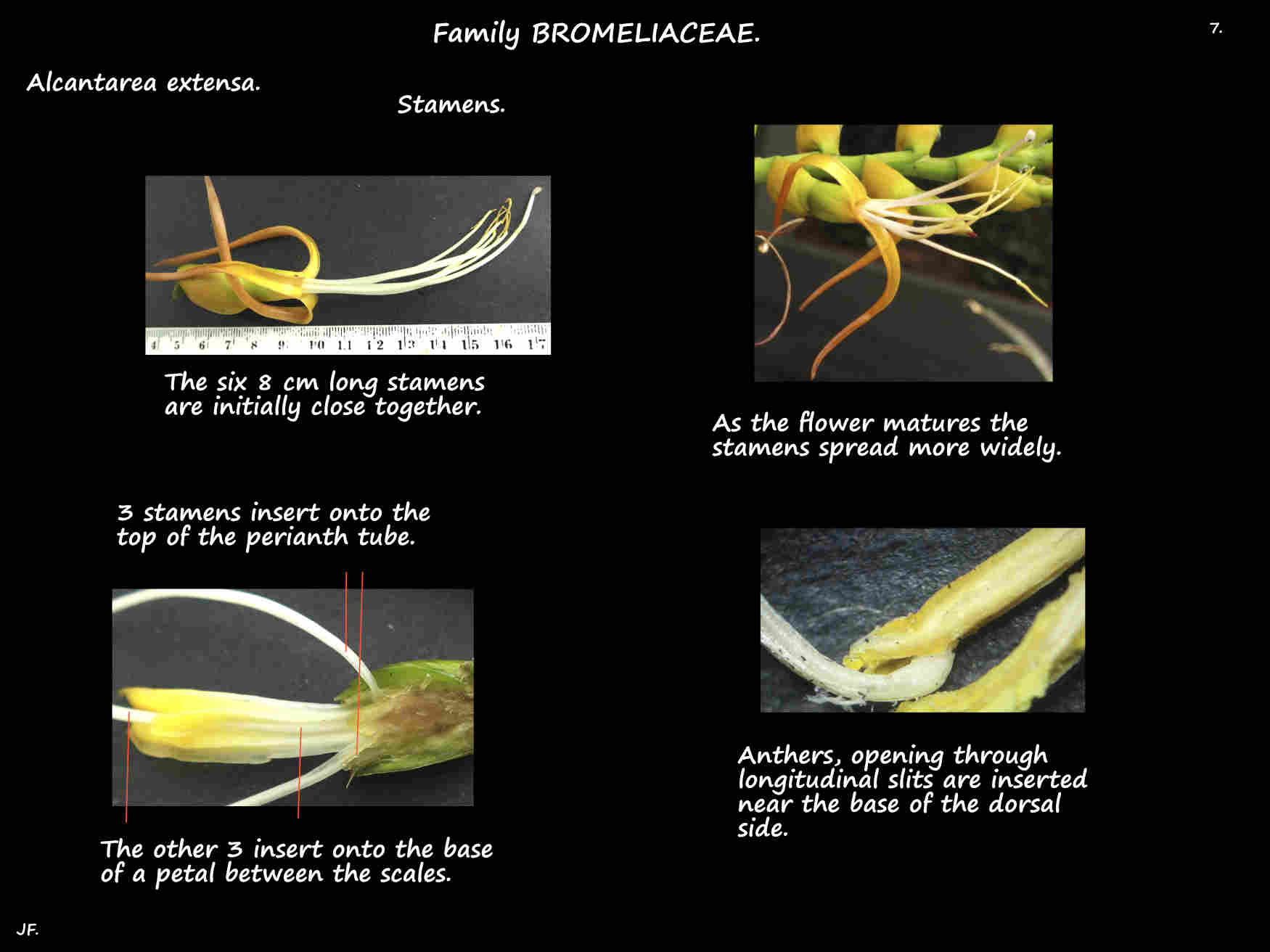Alcantarea extensa.
Native to Brazil is was previously known as Vriesea extensa.
A. extensa rosette features and its bract colours are variable and the plants are similar to a number of other species.
Because of this they are sometimes treated as an A. extensa complex which includes, among others A. distractila,
A.turgida, A. lurida and A. vinicolori (the only other one commonly available in Australia).
Common features of these species include the widely spreading stamens when the flower is mature and the mostly yellow
petals that fade as the flower opens.
Alcantarea extensa plants have a funnel-like rosette of leaves on a short stem.
The plants are around 1.5 m high and wide.
The spirally arranged leaves have a sheath with tiny brown scales.
The ligule is the flap of tissue at the blade-sheath junction.
The strap-like blades are up to 1 m long and 12 cm wide with a blunt or pointed tip.
There are no teeth on the margin.
The blade is typically pale green with transverse grey bands.
Sometimes there are reddish or purplish lines, spots or blotches.
There is a spotty to widespread waxy coating.
The flower stalk, peduncle or scape with the inflorescence at the top is up to 3 m high.
The erect scape, up to 3 cm thick is mostly covered by overlapping scape bracts.
The bracts, with a pointed tip curve out from the scape.
Those in the middle of the scape are up to 5 cm long and 4 cm wide.
The bracts are green but may have reddish-purple tips or transverse lines near the base.
They may also have a waxy coating.
The inflorescence has a central axis with widely spreading lateral branches.
There are up to 9 branches with the longest up to 65 cm.
Below the base of each branch is a wide ovate purple-red primary bract with a pointed tip.
The up to around 25 flowers along each side branch are in 2 ranks.
On a short pedicel with a floral bract at the base they are up to 11 cm long.
The elliptic floral bracts are up to around 4 cm long and 4.5 cm wide.
The tip is blunt and they can be green to reddish-purple.
The 3 greenish elliptic sepals are up to 5 cm long.
The 3 linear petals, up to 8 cm long curve out and back.
They are yellow with very short longitudinal purple dashes (spots) on the outer surface.
There are a few white scales near the tip of the outer surface.
The inner surface is a plain yellow and has no hairs.
The petals quickly wilt and fade to cream or white.
At the base of each petal are 2 large appendages or scales with a rounded tip.
The 6 stamens, in 2 whorls have white filaments and yellow anthers.
Slightly shorter than the petals they are initially straight but then curve outwards so they are widely spaced.
The mostly superior ovary has a single white style that is slightly longer than the stamens.
It is white with a few short purple dashes just below the stigmas.
The 3 small stigma lobes are white.
The seeds have appendages at both ends with the basal one being the same length as the seed while the
apical one is longer than the seed.
J.F.

